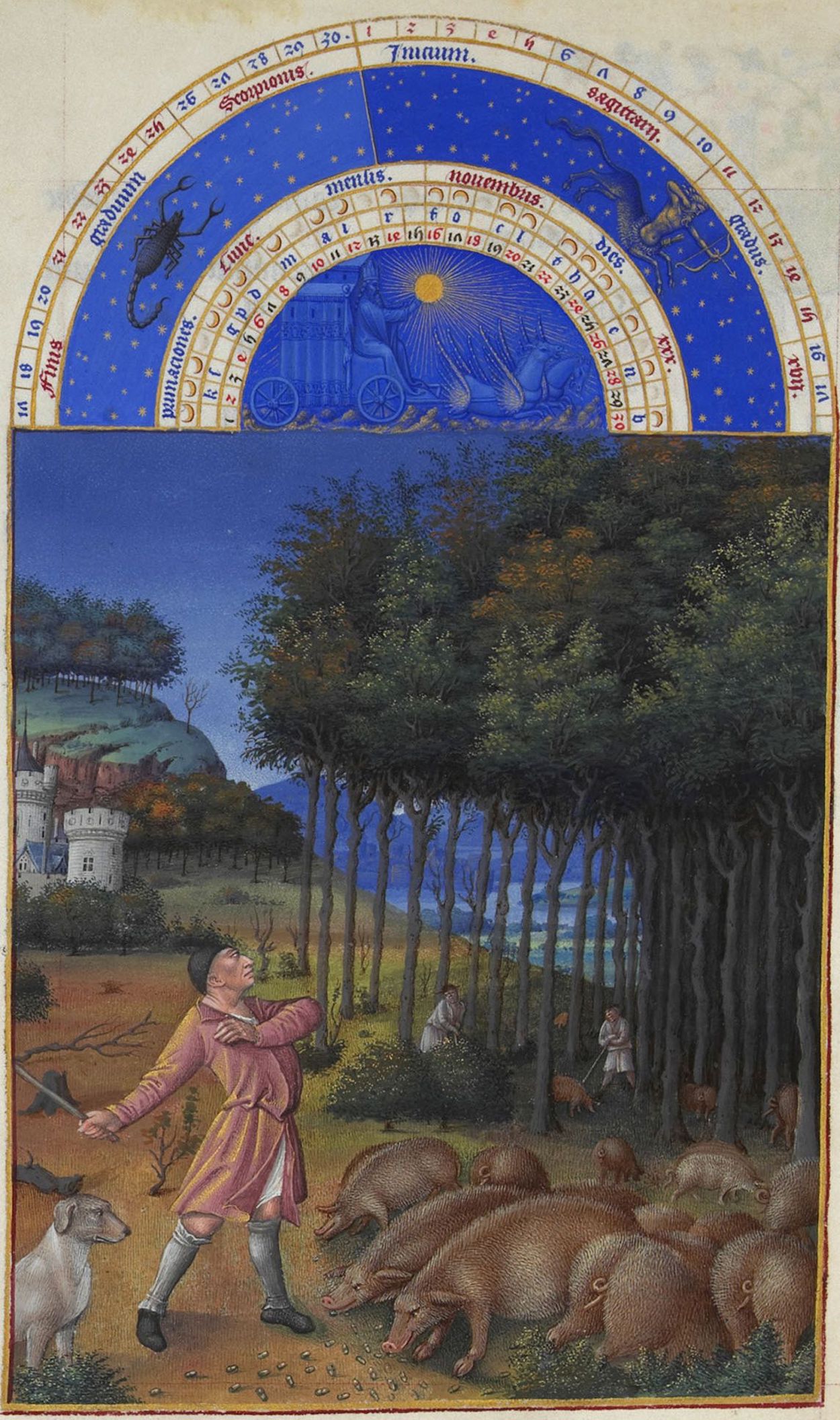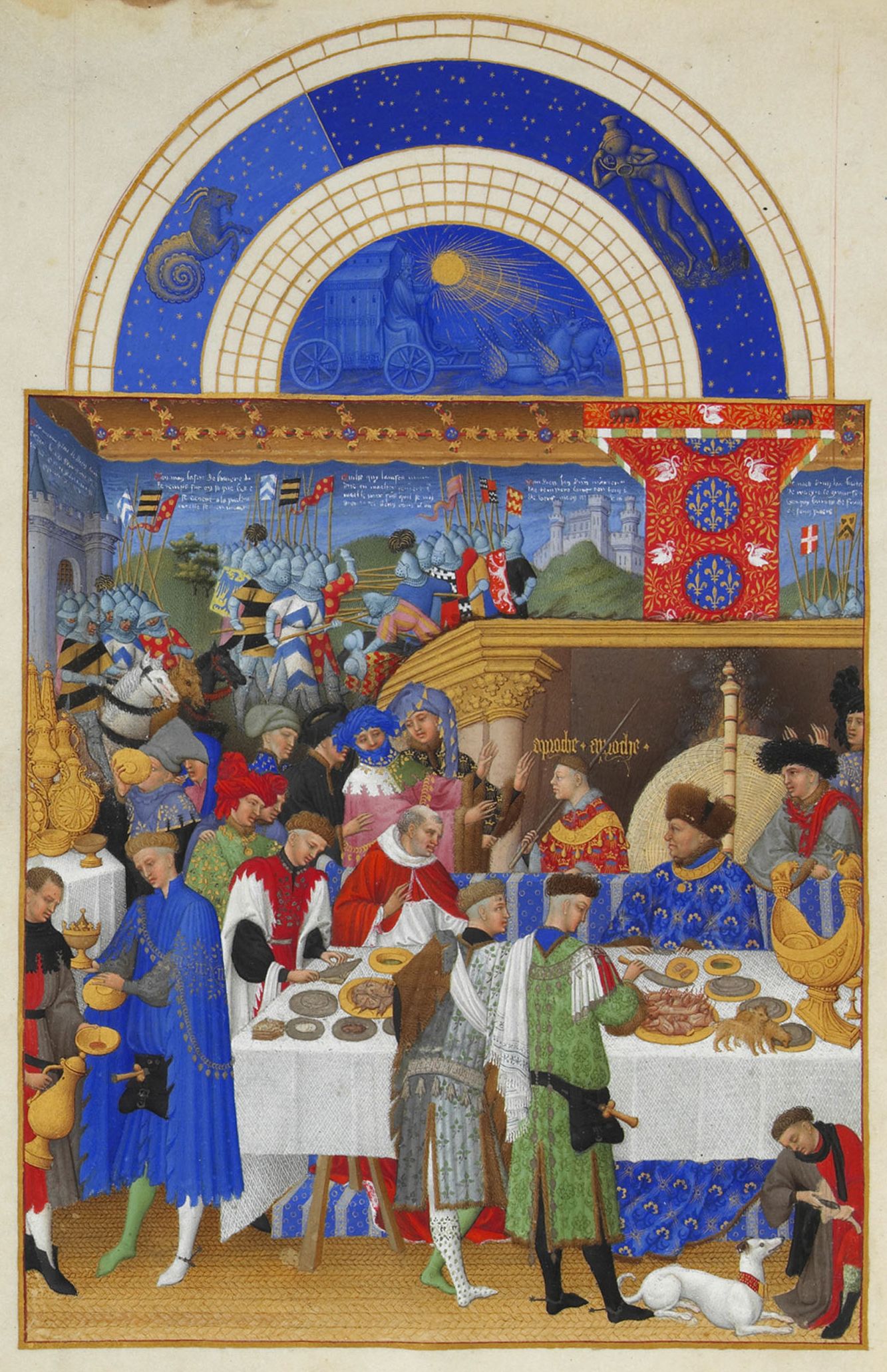Les Très Riches Heures is a classic example of a medieval book of hours, a collection of prayers and readings for each liturgical hour of the day—hence the name—as well as supplements such as devotional lessons, hymns and a monthly calendar. Such books were intricately decorated with miniature paintings, calligraphy, and initials on fine vellum parchment and often embellished with gold. “November,” presented here, is a part of a “Labors of the Months” calendar. It depicts the autumn acorn harvest, with a peasant throwing sticks to knock down the acorns on which his pigs are feeding. This lavishly decorated book of hours, considered one of best examples of Gothic manuscript illumination, was made for Jean, Duc de Berry, a well-known patron of the arts.
Most of the brilliantly colored landscapes in the calendar were painted sometime between 1412 and 1416 by the three Limbourg brothers (Herman, Paul and Jean) who hailed from Nimwegen in Flanders. In 1416, however, Jean de Berry and all three Limbourg brothers suddenly died, possibly of the plague, leaving the work unfinished. It is believed an unidentified artist embellished parts of the book sometime around the 1440s. It was not until 1485-1489 that the book was completed by the French miniature painter Jean Colombe, who painted the November scene showing the tradition of turning pigs out into oak woodlands in the fall to eat acorns, which would fatten them for butchering


 The Limbourg Brothers
The Limbourg Brothers